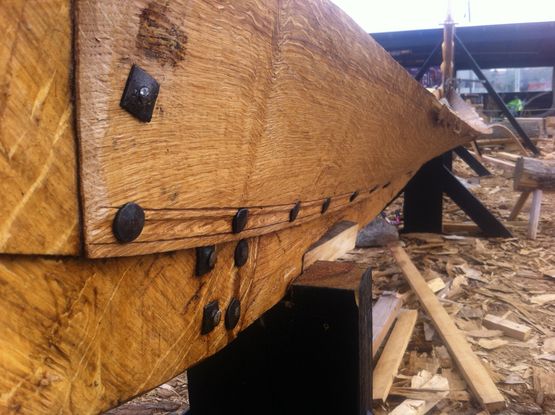During the time between the Hjortspring Boat (circa 350 B.C.), on which the planks were sewn together with lime bast cord, and the Nydam Boat (circa 350 A.D.), iron working evolved enough to allow blacksmiths to make the rivits efficiently and at a relatively low cost. This evolution, however, does not mean every boat after Nydam was built with iron rivets, the sewing technique lived on alongside rivets for many hundred years.
It requires a large portion of iron to produce rivets enough for even a small boat like Gislinge, which in its finished state will contain between 450 and 500. Every rivet weighs around 10 grams so we require at least 4.5 kg of raw iron which in turn takes about 45 kg of bog iron to produce.
The Nydam Boat represents the evolutionary step just “below” Viking longboats, carrying up to 45 warriors 36 of which rowed, but was still without a sail. It would take another apx. 350 years before the Scandinavians mastered that technology. The earliest Scandinavian ship found carrying mast and rig is the Oseberg Ship from 820 A.D.
To fit the boards together, a hole is drilled through both keel and plank using a spoon shaped drill. The hole is preferably just a little smaller in diameter than the rivet. The rivet is then fitted through the hole and the tip is cut of which leaves a blunt end that can be hammered (riveted) over/around the rowe to prevent the rivet from being pulled back out. This procedure is followed every time another one of the four planks is fitted.
As part of the Gislinge Boat Project, a subproject concentrating on extracting iron from bog iron and turning it into quality rivets and rowes for the boat will take place at the museum in Roskilde between July 27th and August 2nd. Through five separate, controlled experiments archaeologist and ironworker Mads Jylov and blacksmith Jonas Bigler will carefully follow and document the process. One of the important elements will be to investigate just how many times you need to fold a piece of iron to get the needed strength for a rivet.
